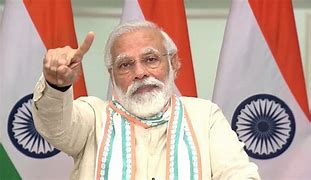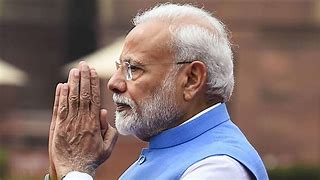Top News
Saarc must act to reap fruits of economic integration: Modi

Kathmandu: Prime Minister Narendra Modi Wednesday called for a better economic within integration Saarc, expressing concern that under 5 percent of the region’s global trade takes place between its eight member countries.
The Indian prime minister also promised a special funding vehicle, overseen by his country, to finance infrastructure projects in the region, while also proposing a Saarc business travel card and cross-border industrial corridors to facilitate trade.
“Indian companies are investing billions abroad, but less than 1 percent flows into our own region,” the prime minister said as the two-day, 18th Saarc Summit began at the Nepalese capital.
“It is still harder to travel within our region than to Bangkok or Singapore, and more expensive to speak to each other,” he said.
The value of regional trade was estimated at $22 billion last year.
Giving an example of the lack of economic integration, the prime minister said goods today have to travel from one Punjab in India to the other Punjab in Pakistan through New Delhi, Mumbai, Dubai and Karachi, making the journey 11 times longer and four times costlier.
At the same time, he conceded that India, too, had its share of responsibility because of its sheer size and location, and knows well that merchandise from one Saarc nation has to go around the Indian peninsula to reach their destinations.
“Just think of what we are doing to our consumers and to our environment! We must shrink the distance between our producers and consumers and use the most direct routes of trade. I know India has to lead, and we will do our part. I hope, each of you will, too.”
At the same, Modi said India has moved ahead in this area and cited some examples:
-Duty free access to five South Asian partners for 99.7 percent of their goods
-Assistance of nearly $8 billion in South Asia over a decade.
-The deepening of infrastructure links with Bangladesh through rail, road, power and transit
-New era of cooperation with Nepal and Bhutan on energy
-A flourishing free trade pact with Sri Lanka
-A new pact soon to meet the energy needs of Maldives
-Reaching out to Afghanistan despite the distance and difficulties
-Train service to Pakistan for better people-to-people connect.
Modi said infrastructure was the Saarc region’s greatest weakness and its most pressing need. “When I thought of coming to Kathmandu by road, it made many officials in India nervous. Because of the condition of roads at the border!” he said.
“I also want to set up a special purpose facility in India to finance infrastructure projects in our region that enhances our connectivity and trade,” he said, adding: “We speak of ease of doing business in India. Let’s extend this to our region.”
The prime minister told the assembled leaders that he was aware of India’s huge trade surplus with other Saarc countries, which was neither right nor sustainable, and assured: “We will address your concerns and give you a level playing field in India.”
At the same time, he called for the right business environment in the region that can attract Indian capital to produce more for the Indian market and create jobs. This, he added, will also allow the region to take advantage of the natural synergies.
Speaking about the Saarc grouping, as people view it today, the Indian prime minister said there were usually two reactions – cynicism and scepticism. “This, sadly, is in a region throbbing with the optimism of our youth.”
He said the region’s development gap must spur Saarc leaders to do more and said one must not get stuck behind the walls of differences and be hesitant to move out of the shadows of the past.
“This won’t resolve our differences, but will certainly deprive us of opportunities.”
Entertainment
Casino Days Reveal Internal Data on Most Popular Smartphones

International online casino Casino Days has published a report sharing their internal data on what types and brands of devices are used to play on the platform by users from the South Asian region.
Such aggregate data analyses allow the operator to optimise their website for the brands and models of devices people are actually using.
The insights gained through the research also help Casino Days tailor their services based on the better understanding of their clients and their needs.
Desktops and Tablets Lose the Battle vs Mobile
The primary data samples analysed by Casino Days reveal that mobile connections dominate the market in South Asia and are responsible for a whopping 96.6% of gaming sessions, while computers and tablets have negligible shares of 2.9% and 0.5% respectively.
The authors of the study point out that historically, playing online casino was exclusively done on computers, and attribute thе major shift to mobile that has unfolded over time to the wide spread of cheaper smartphones and mobile data plans in South Asia.
“Some of the reasons behind this massive difference in device type are affordability, technical advantages, as well as cheaper and more obtainable internet plans for mobiles than those for computers,” the researchers comment.
Xiaomi and Vivo Outperform Samsung, Apple Way Down in Rankings
Chinese brands Xiaomi and Vivo were used by 21.9% and 20.79% of Casino Days players from South Asia respectively, and together with the positioned in third place with a 18.1% share South Korean brand Samsung dominate the market among real money gamers in the region.
Cupertino, California-based Apple is way down in seventh with a user share of just 2.29%, overshadowed by Chinese brands Realme (11.43%), OPPO (11.23%), and OnePlus (4.07%).
Huawei is at the very bottom of the chart with a tiny share just below the single percent mark, trailing behind mobile devices by Motorola, Google, and Infinix.
The data on actual phone usage provided by Casino Days, even though limited to the gaming parts of the population of South Asia, paints a different picture from global statistics on smartphone shipments by vendors.
Apple and Samsung have been sharing the worldwide lead for over a decade, while current regional leader Xiaomi secured their third position globally just a couple of years ago.
Striking Android Dominance among South Asian Real Money Gaming Communities
The shifted market share patterns of the world’s top smartphone brands in South Asia observed by the Casino Days research paper reveal a striking dominance of Android devices at the expense of iOS-powered phones.
On the global level, Android enjoys a comfortable lead with a sizable 68.79% share which grows to nearly 79% when we look at the whole continent of Asia. The data on South Asian real money gaming communities suggests that Android’s dominance grows even higher and is north of the 90% mark.
Among the major factors behind these figures, the authors of the study point to the relative affordability of and greater availability of Android devices in the region, especially when manufactured locally in countries like India and Vietnam.
“And, with influencers and tech reviews putting emphasis on Android devices, the choice of mobile phone brand and OS becomes easy; Android has a much wider range of products and caters to the Asian online casino market in ways that Apple can’t due to technical limitations,” the researchers add.
The far better integration achieved by Google Pay compared to its counterpart Apple Pay has also played a crucial role in shaping the existing smartphone market trends.
Content provided by Adverloom

























